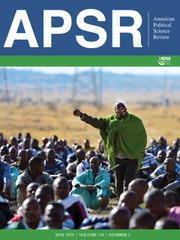No CrossRef data available.
Article contents
How Partisan Are U.S. Local Elections? Evidence from 2020 Cast Vote Records
Published online by Cambridge University Press: 26 September 2025
Abstract
Analyzing nominally partisan contests, previous literature has argued that state and local politics have nationalized. Here we use individual ballots from the 2020 general elections covering over 50 million voters to study the relationship between individual national partisanship and voting in over 5,700 contested down-ballot contests, including nonpartisan races and ballot measures. Voting in partisan contests can be explained by voter’s national partisanship, consistent with existing literature. However, we find that voting for local nonpartisan offices and ballot measures is much less partisan. National partisanship explains more than 80% of the within-contest variation in voting for partisan state and local offices but less than 10% for local nonpartisan contests and local ballot measures. The degree of partisanship in local spending measures varies by the type of service—for example, education, roads, public safety, housing. Finally, we find evidence of structure in the pattern of votes on local spending measures.
Information
- Type
- Research Article
- Information
- Copyright
- © The Author(s), 2025. Published by Cambridge University Press on behalf of American Political Science Association
Footnotes
Handling editor: Marisa Abrajano.


Comments
No Comments have been published for this article.